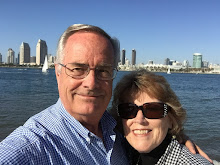A very small history lesson is needed here, to help you understand the reason that I own the machines that I do. Before the 1900's, not too many women even owned a sewing machine (much less afford one!) and the ones who did were pretty confined to the type of machine that was available. Besides making clothing, women also made the quilts for their families' beds. The log cabin design was one of several popular patterns back then with the center squares being either red (to represent hearth or heart) or yellow (to represent a candle in the window). Two-color quilts were also quite popular, that is, if you could afford the fabric. Crazy quilts were popular due to the irregular pieces of fabric that were used. Once these quilts were sewn together, you could embellish over those worn pieces of scraps. Those who had more money, along with more time, made more elaborate crazy quilts in honor of Queen Victoria. The fabric used on the fancier crazy quilts included, rich satins, wools, velvets, brocades, linen, and more. The main purpose of those crazy quilts was to show off one's hand work and wealth. Most had a spider web embroidered on it somewhere believing it to bring good luck or good fortune. Many of the quilts were made solely by hand back then, but as time marched on, the sewing machine became more popular and much more available. It took far less time to make that valuable addition to one's home and more women were able to purchase them.
The first machine that I'm going to share with you is a Minnesota A treadle sewing machine and it's a beauty! Made in 1910 by the Davis Sewing Machine Company, it was sold exclusively by Sears & Roebuck. My mom first learned to sew on one of these machines and states quite proudly that she could get going pretty fast on one of these. How wonderful it must have been to have the availability of such a fabulous machine!


The second machine that I'm going to share is a Singer hand-crank machine. This machine is a little tricky as you have to crank the machine while maneuvering the fabric through all at the same time. I have a friend who owns a couple of these machines and has made several quilts on them. She does demos all over the country and I myself have had the wonderful privilege of demoing mine as well and have always marveled at how beautifully it sews! This machine was made in 1923 in Clydebank, Scotland and manufactured in Great Britain. It's also in excellent condition!

With the advent of the Depression, Singer took a huge risk and made a lightweight sewing machine that women could take with them when their families had to up and move due to job loss, extended families moving away, financial instability, etc., etc. This 'risk' ended up being a huge winner for the Singer Sewing Machine Company. The machines were inexpensive, light as a feather, (11 lbs.) and they took up hardly any room in those already crowded cars. The tables that you could purchase to go along with those machines served not only as a sewing machine 'cabinet' for the machine but they also became a nice dinner table or card table to boot. And..... those tables could easily collapse making them quite portable... along with the machine. Genius! The Featherweight was known as the perfect portable and they are still popular today due to their precise stitching ability and ease of taking to class. Most women have affectionately named their machines, me included. I wanted you to see a picture of the table, which was constructed out of wood on top and metal legs. The one that I have is in perfect condition. Just like the machines are numbered, the tables have serial numbers as well. When you remove the insert, your machine fits nicely down into the table top. When it is needed for a dinner table, the insert fits just as nicely back into place!
The machine.....

The table.....


The last machine pictured on this post belonged to my aunt Sybil. She made me several dresses on this machine and I am sure that it cost a small 'fortune' when she purchased this baby back in 1952. It's a Pfaff 130 "Dial-a-Stitch". Talk about a heavy duty sewing machine, this is it. It weighs at least 50 lbs. and can sew anything...... even the canvas on a ship's mast. It is known as an industrial powerhouse and I can see why. When I have something incredibly heavy that needs sewn together, this is the machine I head for because of its durability. This machine was made in West Germany.

The Berninas are next!


2 comments:
Very nice!
That table also makes a great children's dinner table ;D
Ya think?!
Post a Comment